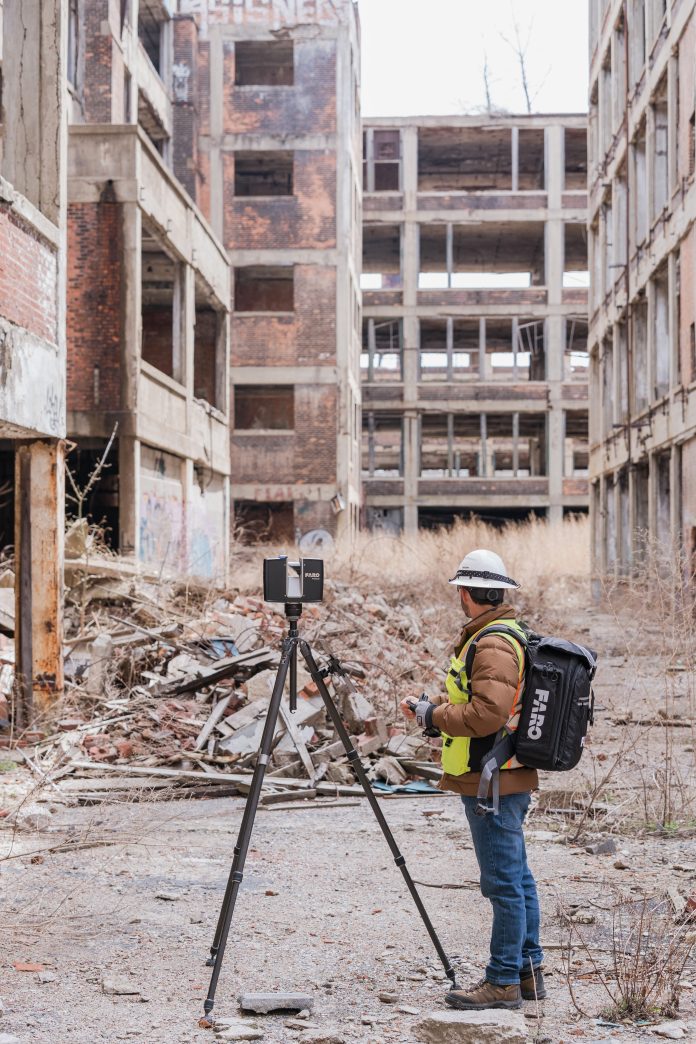Economic uncertainty could provide an opportunity for construction companies to harness 3D reality capture technology that could transform their business for the better
In the last 12-15 months, it seems economists’ crystal balls have become a bit cloudy.
Some of those crystal balls portend a significant global recession, while others forecast a milder slowdown.
Others, still, happily predict continued growth.
Earlier this year, the World Economic Forum found that two-thirds of those surveyed expect a global recession in 2023.
One-third of survey respondents said a 2023 recession was ‘unlikely’
It’s enough uncertainty to send the construction industry scrambling for the nearest bottle of paracetamol.
On one hand, a pending economic slowdown has staffing and hiring implications. But it also has technology implications too, and whether or not the purchase of 3D reality capture devices, laser scanners, 360° panoramic cameras and geolocation mapping systems for a particular project, makes the most sense.
Timeworn logic suggests the obvious: hold your cards. Recessions are about belt-tightening, cutting back and whatever other weight-related comparisons one can make.
The point of point clouds
Too often, though, such logic is showing its age as it fails to accurately take into account the cost, speed, efficiency and accuracy savings such technology can create.
Staying with 3D laser scanners, for instance, with proper use and training to maximise
performance, such a device will pay for itself over time and the long-term savings for a
company using it could be significant. Estimates place industrial site project
compression at 10% while reducing total project costs by 7%.
Laser scanners work by emitting laser light at a target, essentially any physical object. They then measure the time it takes that beam of light to be reflected back to the scanner after striking the object/s it was capturing in a 360° space.
Like echolocation for a bat or sonar for marine life that allows these creatures to navigate their worlds, light-sounding technology is what generates the 3D pointcloud, consisting of millions of data points to construct a complete image.
Individual scans are stitched together like a giant jigsaw puzzle through a process called registration.
This means that whatever is scanned in the physical world has identical dimensional accuracy in the digital world, down to the millimetre level.
Laser scanners save on project costs and provide smart resource allocation
When dealing with large construction projects, it’s vital that a building’s constituent parts fit together without requiring multiple repeat measurements or unnecessary trips back to the job site.
A laser scanner ensures that this will not happen. And by doing so, saves on project costs thanks to smarter resource allocation and reallocation.
The point cloud, as a shareable, digital file is also an ideal remote project oversight tool.
Instead of project stakeholders having to physically visit a site (which includes flight and lodging expenses, as well as an increased carbon footprint – an economic cost only beginning to be factored) or hear about such progress by word-of-mouth (lending toward inaccuracy), they can view project updates in real-time as the data is shared increasingly via secure cloud platforms.
Not only are new buildings being constructed, but post-Covid-19, many are being retrofitted to new purposes or redesigned outright. In the UK, arguably the largest retrofit in history has been the work done at Battersea Power Station. Here, too, laser scanners can assist – as can 360° panoramic photography and geolocation technology.
Ensuring compatibility between older and newer sections of buildings is vital for structural longevity and sectional interoperability.
Rethinking “recession-proof”
Another point to consider is that even the logic of “recession-proof” might be flawed too.
A mild slowdown in economic activity could have several longer-term economic cycle benefits:
- Reducing inflation as global consumer spending drops.
- Easing supply chain pressures, which while returning to pre-pandemic norms have yet to fully recover.
- Strategic planning for the next construction project (slower business enables the allocation of more resources on any given project).
- The time to update business processes and institute additional internal savings.
- Increased savings rates often lead to secondary spending surges, similar to what happened during the pandemic and its immediate aftermath.
All of these incremental savings add up – and could make the difference between a construction company on the verge of being able to afford a 3D reality capture device and one that cannot.
Economic uncertainty could provide opportunities for construction companies to invest and train
Last is that “economic uncertainty” (code for a recession) could be just the window of opportunity a construction company has been looking for to not only invest in the technology but to take the time necessary to train on it.
This is a fact too often overlooked – customers who purchase state-of-the-art equipment only to see it languish in the proverbial box, collecting dust on the proverbial shelf. That’s a sure-fire way to lose money, not save it.
Studies repeatedly confirm that a well-trained workforce is a happier, more productive one, and one that yields up to 24% greater profits with a 30% to 50% retention rate boost. By contrast, ineffective training can cost companies $13.5m per 1,000 employees annually.
Thus, for construction companies on the fence about purchasing a 3D reality capture device or for third-party providers eager to market their most advanced products to the largest audience, uncertain economic times might be just the window of investment opportunity they’ve been looking for to capitalise on technologies like 3D laser scanning and others to help transform their business from a speed, accuracy and oversight capability they hadn’t fully considered.
Amanda Hidalgo
Office of Corporate Communications
Tel: +1 700-161-1036
Please be aware that this is a commercial profile.

















